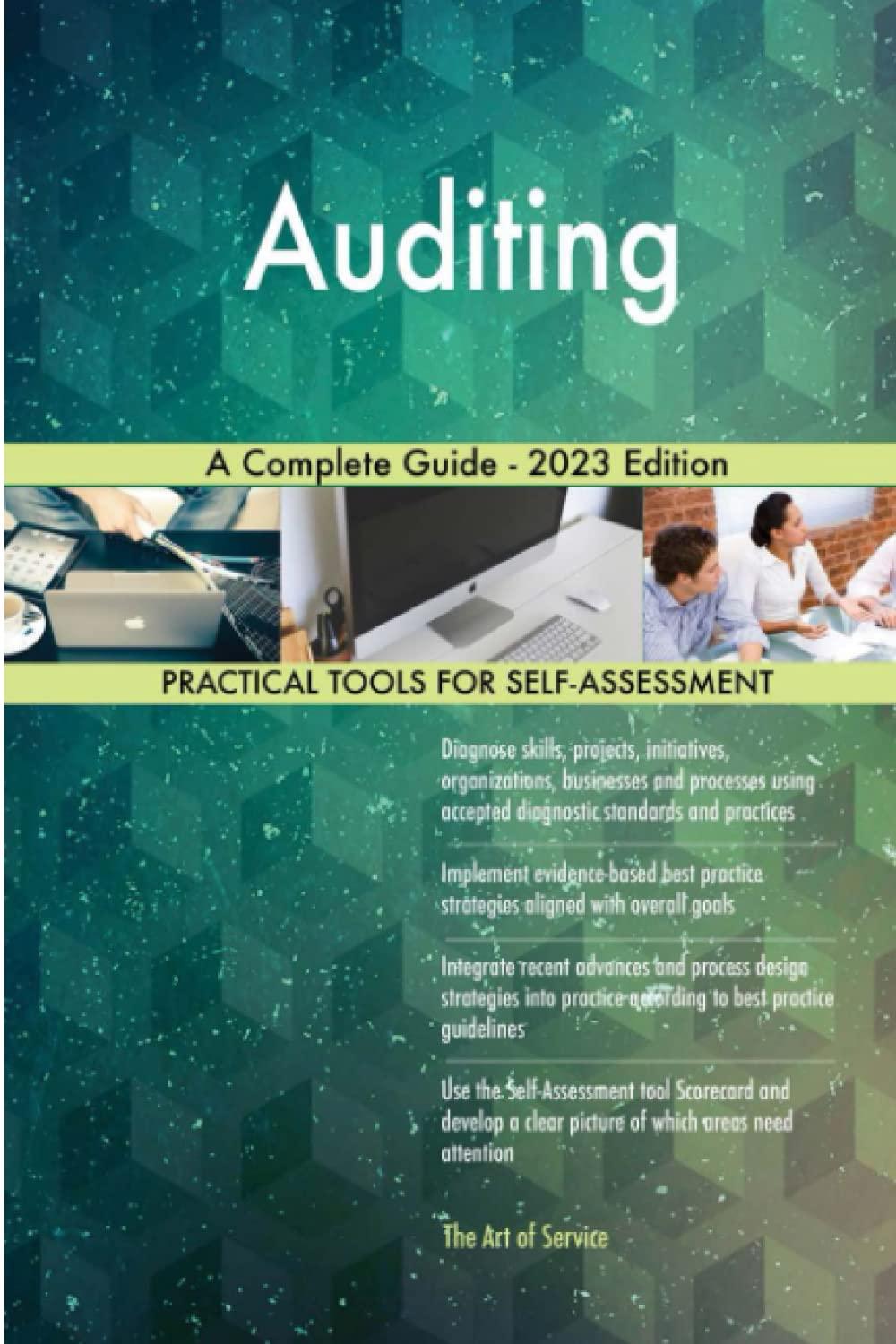Question
Need answers to all posted MCQ. No need for explanations. Only attempt if you will answer all posted questions. 43. Arawak, Inc. acquired all the
Need answers to all posted MCQ. No need for explanations. Only attempt if you will answer all posted questions.
43. Arawak, Inc. acquired all the assets of Basta Inc. for $500,000 worth of its nonvoting convertible preferred stock and $200,000 in cash (to be retained by Basta Inc.). Basta Inc.s assets had a fair market value of $700,000 and a basis to Basta Inc. of $150,000.
What is Arawak Inc.s basis in the acquired assets?
a. $700,000
b. $150,000
c. $350,000
d. $200,000
e. We do not have sufficient information to answer the question.
44. Fizzy, Inc., a manufacturer of seltzer water, is going through a recapitalization that will qualify as a reorganization under Code Section 368(a)(1)(E). A bondholder exchanges a bond worth $950 with a face value of $1,000 and a basis of $875 for voting preferred stock with a par value of $1,200 and a worth of $1,000. The bondholder, on receipt of the stock, will have:
a. Gain: $0; basis: $875
b. Gain: $125; basis: $1,000
c. Gain: $167 ($200 ($1,000/$1,200)); basis: $1,042
d. Gain: $75; basis: $950
45. Purr Cat Food, Inc. has earnings and profits of $50,000 and acquires Wag Dog Food, Inc. in a statutory merger that qualifies as an A reorganization. Wag Dog Food, Inc. has earnings and profits of $40,000. Soon after the merger, Purr Cat Food, Inc. distributes $60,000 to its shareholders, old and new. The amount of the distribution taxable as a dividend is
a. $40,000.
b. $50,000.
c. $60,000.
d. The old shareholders in Wag Dog Food, Inc. have dividends up to $40,000 but the old Purr Cat Food, Inc. shareholders have none.
46. Cattle, Inc. transferred part of its assets to a newly formed corporation, Herd, Inc. Herd, Inc. received assets with a basis of $40,000 and a fair market value of $90,000, but subject to a liability of $55,000. Cattle, Inc. received 100 percent of the stock in Herd, Inc. which Cattle, Inc. distributed to its shareholders in a spin-off that qualified under Code Section 355. Cattle, Inc. must recognize a gain of
a. $50,000.
b. $35,000.
c. $15,000.
d. $0.
47. Bottoms Up, Inc. merged into Flying High Corp. on August 31, 2015 in a transaction that qualified as an A reorganization. At that time, Bottoms Up, Inc. had accumulated net operating losses of $240,000. Flying High Corp.s taxable income without regard to the acquisition this year is $360,000. Assuming Code Section 382 does not apply, the amount of Flying High Corps taxable income that can be offset by Bottoms Up, Inc.s net operating loss is
a. $40,000.
b. $120,000.
c. $120,329.
d. $240,000.
48. Abacus, Inc. forms a corporation, Serious, Inc., by transferring 18 percent of Abacus, Inc.s stock to Serious, Inc. for 100 percent of the stock in Sirius, Inc. Sirius, Inc. acquires 90 percent of the stock of Tyrol, Inc. for its stock in Abacus, Inc. whereupon Serious, Inc. is merged into Tyrol, Inc., with Tyrol, Inc. surviving. Assuming this qualifies meets all of the requirements for one of the following, these transactions may best be described as
a. a Section 351 transfer, followed by a Type B reorganization.
b. a spin-off.
c. the purchase of a subsidiary corporation.
d. a reverse triangular merger.
49. Which of the following does not occur in a Type B reorganization?
a. The shareholders stock bases carry over to the acquiring corporation.
b. The acquiring corporations basis in the acquired corporations assets depends on the value of the consideration paid.
c. The acquired corporations tax attributes generally remain in the acquired corporation.
d. Neither gain nor loss is generally recognized by the corporations involved, nor is there any recapture of depreciation or investment tax credit.
50. Which of the following is not a requirement under Code Section 355 in order to qualify a transaction as a divisive Type D reorganization?
a. Shareholders must not sell their stock for at least five years after the transaction.
b. There must be a substantial business purpose for the transaction.
c. Both the transferor corporation and the controlled corporation must be engaged in an active trade or business after the distribution.
d. 80 percent control must be transferred to the transferors shareholders.
Step by Step Solution
There are 3 Steps involved in it
Step: 1

Get Instant Access to Expert-Tailored Solutions
See step-by-step solutions with expert insights and AI powered tools for academic success
Step: 2

Step: 3

Ace Your Homework with AI
Get the answers you need in no time with our AI-driven, step-by-step assistance
Get Started


